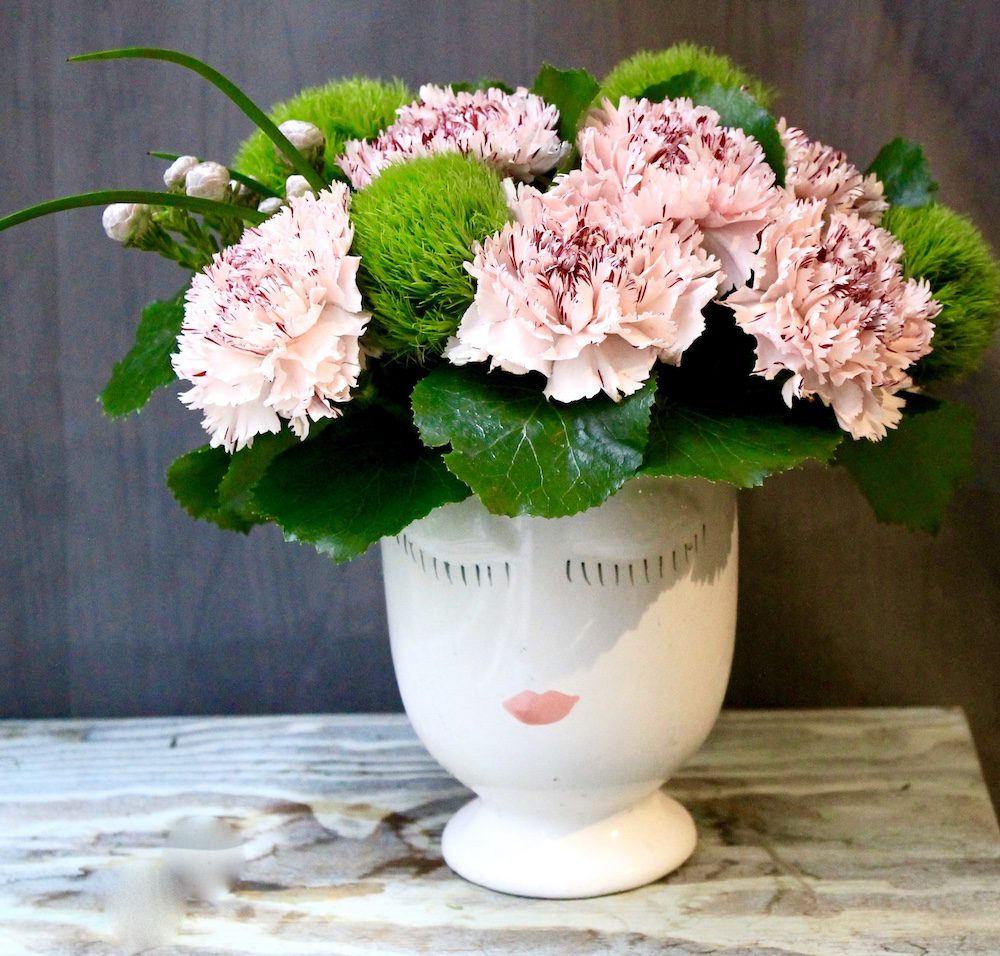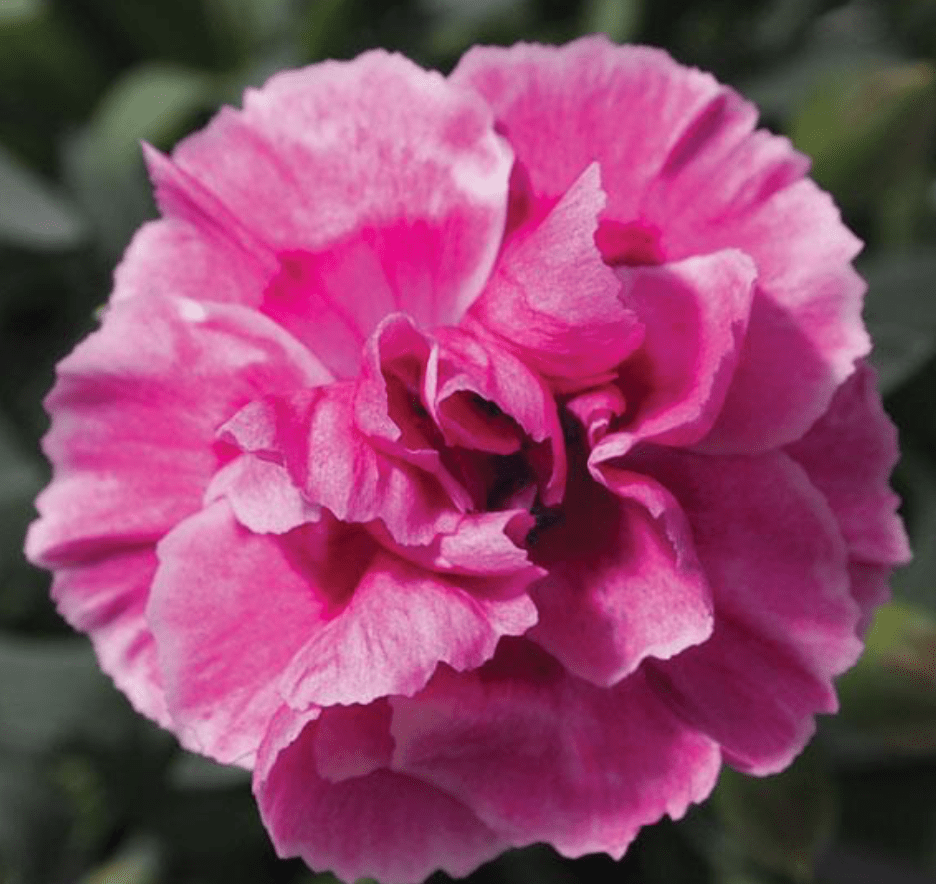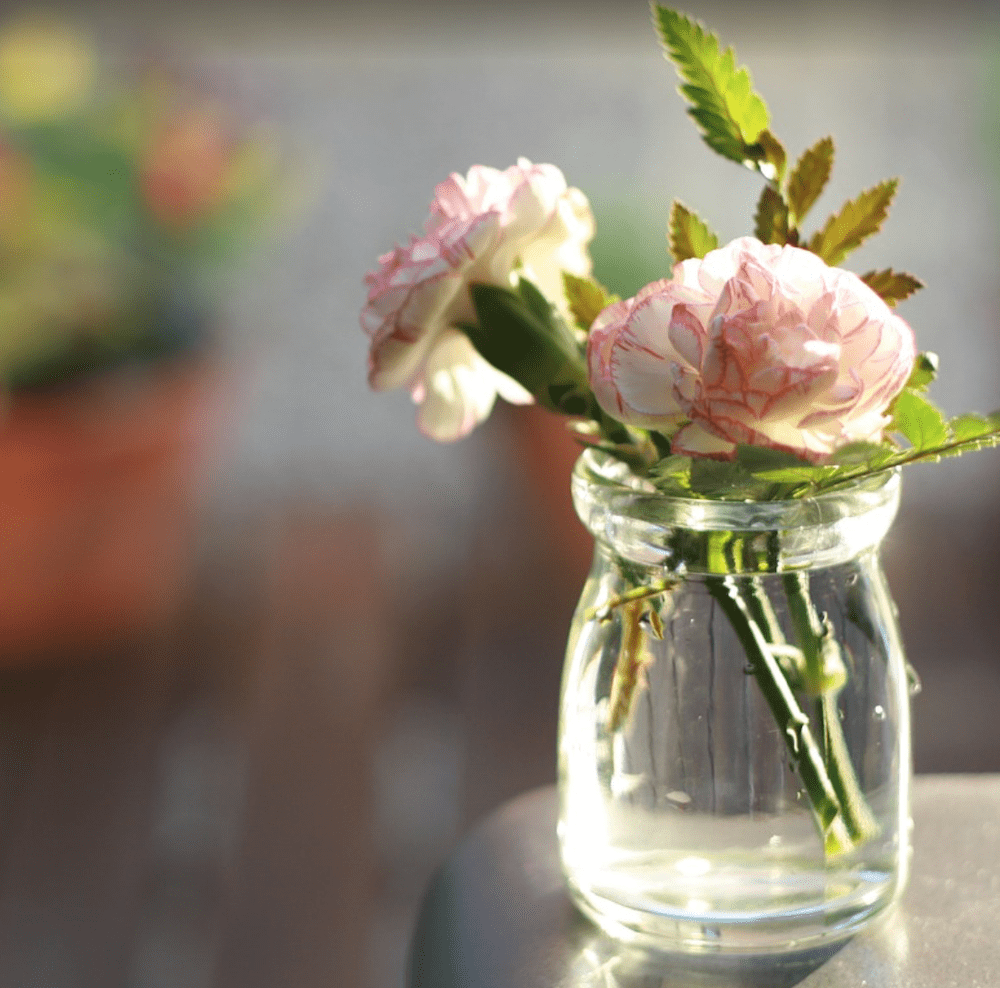All About Carnations – January’s Flower
By Jill Brooke

Hail the carnation, the humble flower of January.
The carnation, the flower for January, is technically called “dianthus” which is a combination of Greek words meaning “divine flower.”
Others believe it is named after the word coronation because Greek ceremonial crowns used the flower and it also decorated sacred statues. And yet others surmise that “dianthus” was named after Zeus, as Zeus in Greek is dios and flower is anthos.
For centuries, carnations got little respect. Dismissed as a funeral flower, they weren’t as boastful or demanding of the spotlight as roses are – nor as finicky. Plus carnations are also inexpensive and attainable to all. They can shine on their own, clustered together whether tall or cut short, or happily cohabitate with other flowers, adding both color and fluttery soft petals.
In fact, carnations are the flower world’s most popular dance partners. They will let other flowers take the lead and just pop their heads out when asked. They fit in anywhere. Imagine that – something beautiful that doesn’t dive into drama.
In the past decade, more and more florists are finding joy in their existence – as is the public. And its history is so interesting!
It certainly has helped that the Florist to the Stars uses them for installations for big brand displays at the Four Seasons hotels and other venues. “We use them all the time – especially in installations,” says Jeff Leatham, whose clients include Taylor Swift, Madonna, and the Dalai Lama. “They have such an amazing lifespan and beautiful colors.”

“Carnations can last weeks in a vase,” notes New York-based florist Rachel Cho, praising their endurance and low maintenance. Plus they are so adaptive. Cho advocates their versatility by showing how by pulling out the middle petals of the flower, the carnation gets a makeover and looks like a prized ranunculus.
No wonder breeders are now producing more varieties and colors each year – which is something to look forward to. “They are the gift that keeps on giving which is a great message for January,” says Dawn Weisberg of Tularosa Flowers.
Not only is the carnation the world’s second most popular flower after the rose, but also one of the oldest. They were discovered by Theophrastus, one of the earliest known botanists, and flower lovers.

SYMBOLISM
In the language of flowers, carnations carry many meanings. In the Middle Ages, flowers were given to brides and grooms to wish them happiness and faithfulness.
White carnations have morphed to also symbolize purity and luck while a red one reflects admiration and affection. Purple is given to those who embrace adventure.
Yellow carnations possess a less positive feeling conveying disappointment or rejection. Over the years, it has also been considered a flower to send for a mea culpa, “I’m sorry,” sentiment.
The pink carnation symbolizes pride and also represents being unforgettable as well as motherly love. We also have interpreted its meaning to apply to breast cancer survivors since pink was established as the cause’s icon and more and more charities are recommending its use for sharing love and support.

HISTORY
Legend has it that when Mary saw her son Jesus carrying the cross to his crucifixion, she broke down and cried. Those tears that fell stirred the soil and pink carnations sprung up from the earth.
This is also why pink carnations are so popular for Mother’s Day and also represent the sentiment of appreciation – as well as why carnations have been linked to funerals. Sadly, this stigma of funerals overshadowed so many other positive qualities and dampened the public interest in carnations for decades.
In the Netherlands, home to some of the world’s most beautiful flowers, white carnations reflect the country’s resistance to World War II and its purity of heart. The flower is worn to remember veterans while in the U.S. England and Canada, it is the poppy.
In the United States, the scarlet carnation became the state flower of Ohio in 1904 to honor the late President William McKinley who would wear one on his lapel. And writer Oscar Wilde used to wear a green carnation on his lapel as a gay symbol in 1892. He instructed his friends to wear them on their lapels to the opening of his comedy, Lady Windermere’s Fan. Subsequently, it became a coded symbol that a man was attracted to men.
Carnation petals were also once used to seep tea. The blooms were also considered helpful to calm the nervous system and even reduce inflammation.

Growing Carnations
- Exposure: Full sun to part shade
- USDA Hardiness Zones: 3 to 9
- When to plant: Spring or fall
- Spacing: 6 to 12 inches apart. Dig a hole and put the root ball on par with the soil surface. And natch add compost, mulch when finished, and water thoroughly.
- Recommended varieties: Fruit Punch Cherry Vanilla, Fruit Punch Spiked Punch, Fruit Punch Classic Coral, EverLast Raspberry Cream, SuperTrouper White, Pink Kisses
- Pests and diseases to watch out for: Spider mites though overall really sturdy
BEST VARIETIES:

For that question, we sought out the expert advice of Gary Vollmer, product and breeding manager for Selecta North America.
Ever wonder why few companies grow cut carnation flowers in the U.S.? Turns out, explains Vollmer, that because they can sustain very cold temperatures, carnations are easy to push through the supply lines and don’t wilt or die. That’s a big plus that also reduces the costs of mass distribution.
What are some favorite varieties?
“Pink Kisses, Oscar, Diadora, Super Trouper (above picture) and a new variety we are calling I Heart You,” he suggests. The new one, I Heart You, is a multi-colored carnation.
And another tip he likes the share. Plant them in containers near entry doorways so that their fragrance can be enjoyed as you go in and out of your house. It can be a stand-alone plant or placed in a nice big pot.
As we look forward to the New Year, consider this. Fall in love with carnations as you bring flowers into your world.
As I have often said, “Why do people covet the difficult flowers when cheerful carnations deliver beauty and long-lasting pleasure? Have a love affair with the prickly rose if you must, but marry or befriend someone like the carnation – and you will be happier.” – Jill Brooke

Jill Brooke is a former CNN correspondent, Post columnist, and editor-in-chief of Avenue and Travel Savvy magazine. She is the founder and editorial director of Flower Power Daily and a monthly columnist for Florists’ Review Magazine. Her next book is “The Botany Boys: The Friendship Garden of David Hosack and DeWitt Clinton.”
